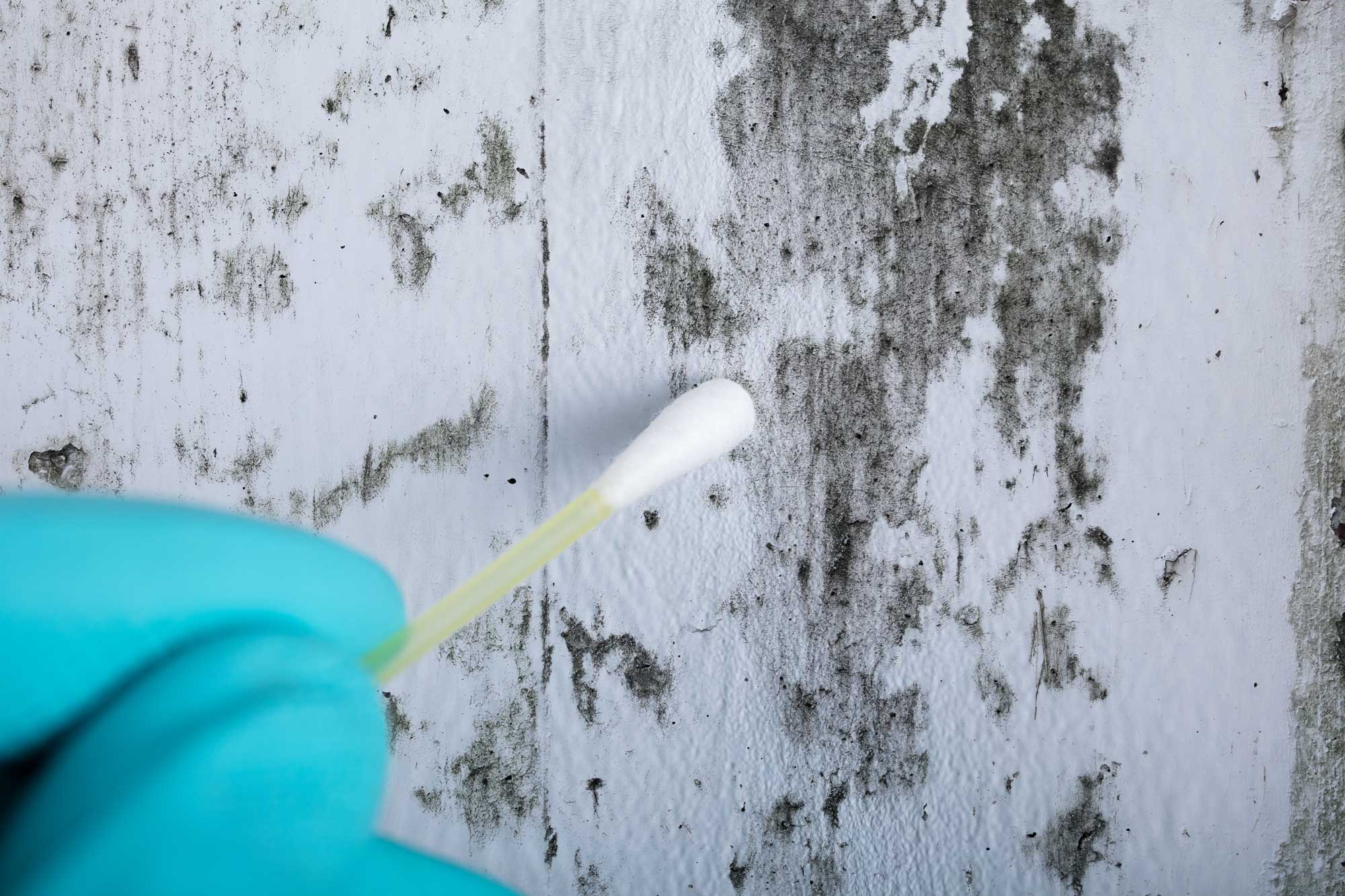
Air sampling for fungal spores has been in the limelight for a long time. The yin to air sampling’s yang is surface sampling and we think it deserves some attention as well. Something that often gets overlooked with air sampling is that the mold isn’t actually growing in the air – that’s just where evidence of fungal growth is most easily found. Fungal growth occurs on surfaces and releases spores into the air, and then those spores land in the air sample and “Ah ha!”, mold has been found. But what about that surface? Where exactly is that mold growing? That is where surface sampling comes in. Surface sampling may not be required for every project, but it can add value to any project when done correctly and purposefully. Here, we explore some of the most common techniques and materials used by industry professionals for surface sampling for mold.
Bio-Tape™ Slides
Bio-Tape™ slides are sterile, flexible, plastic microscope slides that consist of an adhesive sampling area and label, and are the ideal tool for sampling flat surfaces such as walls, tables, joists, etc. The adhesive area should be lightly and evenly pressed to the surface in question to collect surface particulate. These are some of Daane Labs’ favorite surface sampling products because we can stick them straight under a microscope for analysis with very minimal prep time (read: faster analysis… read: faster results). Oh, and what’s that? Daane Labs provides these for free? Yes, yes we do.
Copan Swabs
Copan swabs are another product that Daane Labs provides to clients free of charge. These swabs are sterile (like the Bio-Tape™ slides) and are best used for sampling surfaces you can’t quite get to with a Bio-Tape™ slide. These could be areas like the corner of a windowsill, inside the slats of an A/C vent, between bathroom tiles, etc. Roll the swab evenly across the surface you are sampling, ensuring all sides of the swab come in contact with the surface.
Office Tapes
While we recommend using a product specifically designed for surface sampling, we understand that won’t always be the best option for our clients. Maybe you ran out of supplies (Let us know and we’ll get them to you for free!) or maybe you have a personal preference after years in the field. Regardless of which type of office tape is used, the sampling technique should be about the same. We recommend holding the tape with your thumb and pointer finger, sticky side out. Lightly touch the tape to the surface you are sampling, then stick the tape to the inside of a plastic sandwich bag or directly to a microscope slide. Here are the types of office tape we’ve seen used over the years and what we have to say about them:
- Transparent Scotch® Tape
- This type of tape is a good replacement option for Bio-Tape™ slides because it is transparent, narrow (fits on a microscope slide), and affordable.
- Frosted Scotch® Tape
- Frosted tape appears frosted to the naked eye because of microscopic bubbles and imperfections in the tape. These bubbles and imperfections make it very difficult to get a clear picture of what is actually on the sample, and is not an alternative we would suggest using. We can and have and will analyze frosted tape samples, but we still think it is important for you to understand its shortcomings as a surface sampling product.
- Packing Tape
- Packing tape has similar benefits to Transparent Scotch® Tape, except that it is much wider and therefore requires additional processing by the lab. We are unable to analyze an entire piece of packing tape and must either cut or sub-sample the tape to get it under the microscope.
Q-Tips
Q-tips are non-sterile cotton swabs that can be used in a pinch to collect a surface sample, but it is not something Daane Labs recommends doing regularly. Any non-sterile product used for sampling risks having something already on it, so there can be no telling if what is on the swab was there before or after sampling. Additionally, Q-tips tend to be softer and more delicate than Copan swabs and can deteriorate during processing (i.e., cotton tip can somewhat come apart when exposed to lactophenol cotton blue staining agent).
Bulk Samples
A bulk sample is essentially when the material suspected of growing mold is itself submitted rather than taking a surface sample. Examples of bulk samples we have received are cutouts of drywall, HVAC insulation, wallpaper, roof shingles, baseboards, etc. It is difficult to provide a lot of guidance on this sample type simply due to the fact that these samples can vary so widely. Ideally, bulk samples should be small and representative of the area of concern.
